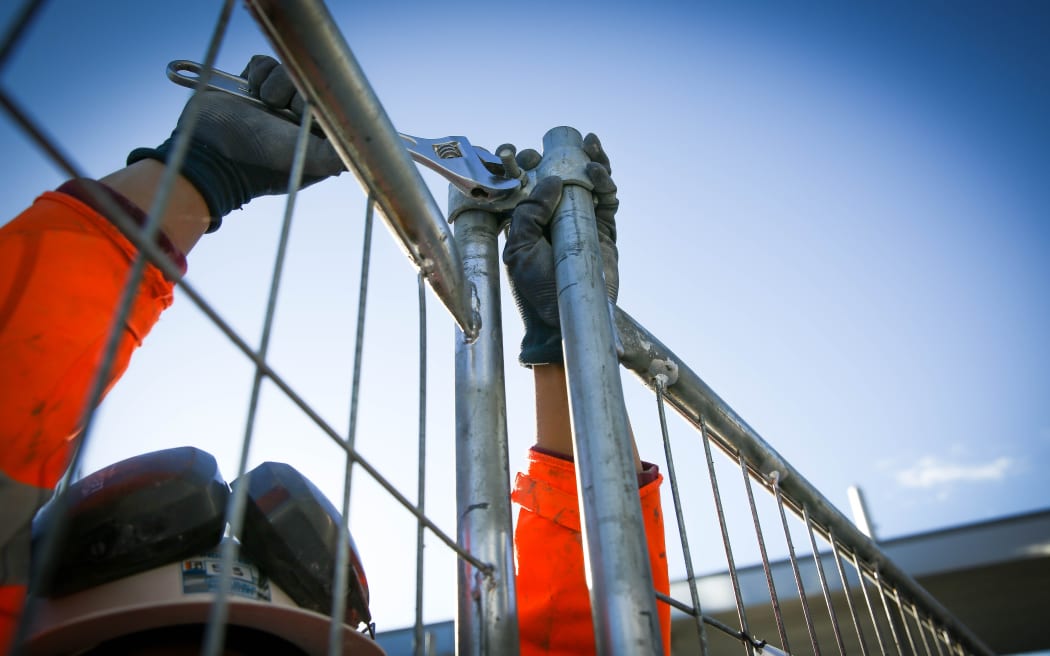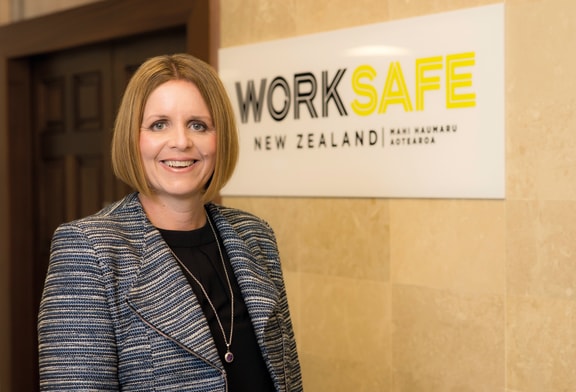Safety at work starts from the first principle of caring for people, and not an exercise in compliance, says Worksafe chief Nicole Rosie.
New Zealand has a poor safety at work record – one of the worst in the OECD – both for people that die in accidents and chronic exposure to dangerous substances.

Photo: RNZ / Alexander Robertson
“We have a high proportion of our population involved in high risk activities – forestry, agriculture, construction and manufacturing.
But we also have a higher rate of harm, so there is a cultural piece to this and it is a bit of that No 8 wire.”
Assuming mistakes will happen and planning for that event is the key to safety, she says.
“We all make mistakes. It’s often luck whether those mistakes result in injury or not.”
Planning for high risk activities – using quad bikes, working at height, working at construction sites and working with vehicles - is essential, she says.
“Plan for the error, you have people in a harness or scaffold so if they do trip they won’t die.”
A culture of caring for people comes from leadership, she says, and not a mindset of “this is about filling in forms and stopping that bloody regulator coming along".
“This has nothing to do with compliance, this is about creating high-performing successful businesses that care deeply for their people and look after them.”
Leadership, risk management and engaging staff have improved work safety in the UK and Australia which she says are 10 to 15 years ahead of New Zealand in this regard.
The UK has 0.5 deaths per 100,000 workers. In New Zealand it is 2.1 per 100,000 overall, but in forestry New Zealand has 32 fatalities per 100,000 workers.
The UK and Australia are now looking at mental health, sleep deprivation and diet as risk factors, she says.

Nicole Rosie, CEO Worksafe NZ Photo: Lindsay Keats
“It’s becoming increasingly obvious that your fitness for work, your psychological preparedness for the day, are key factors in acute accidents.”
Rosie says small and medium-sized businesses (SMEs) remain a concern.
“Anecdotally it is that group that is really struggling. A lot of them are getting really poor advice - paying lots of money for off-the-shelf manuals or apps or other things on the false understanding that that’s health and safety done.”
Another focus for the coming year, she says, is “myth busting”.
“There’s a misconception that the people who have accidents are young hoons, or people on drugs or whatever. The people that die most on quads are 55 to 65-year-old men.”

